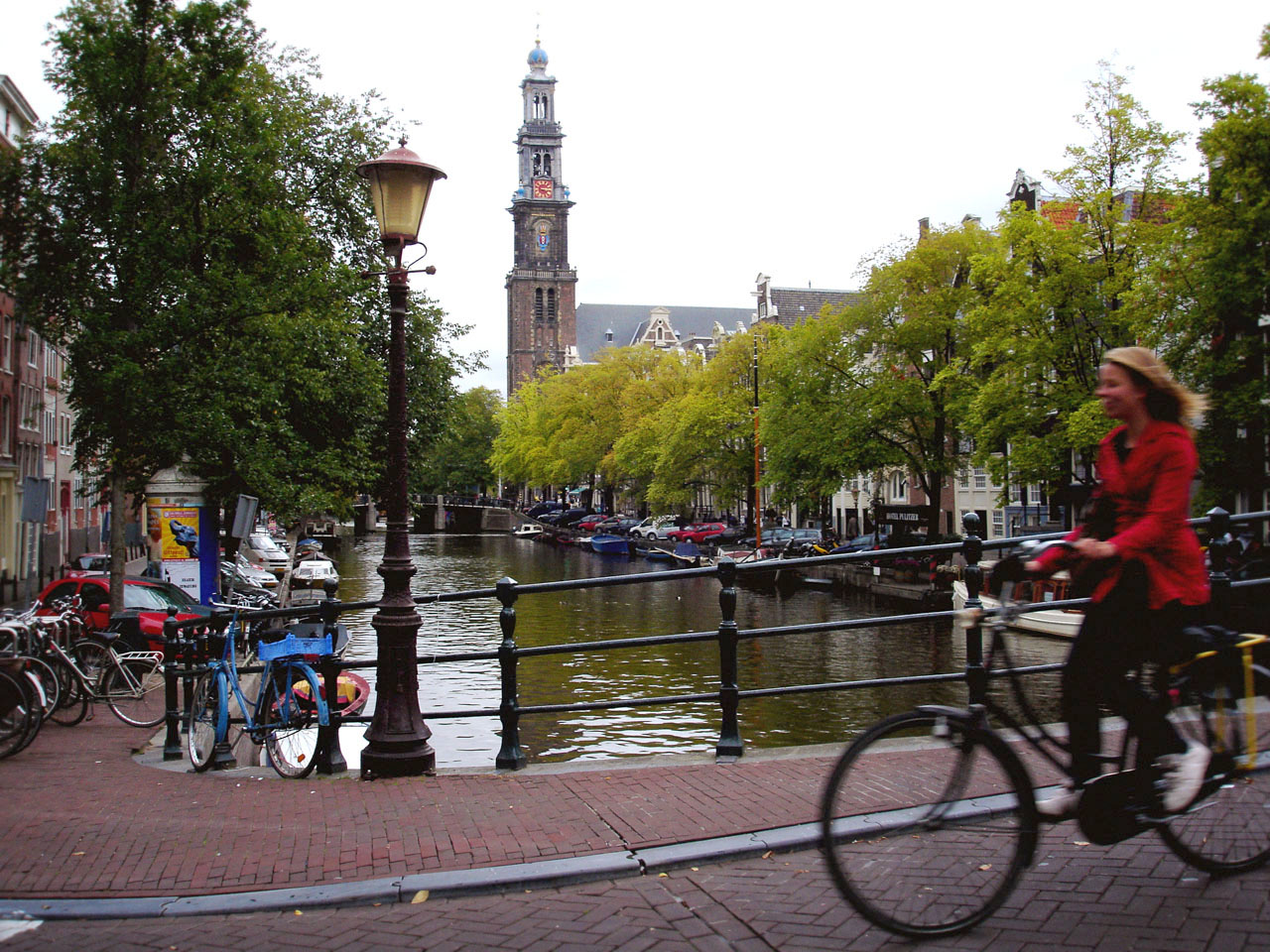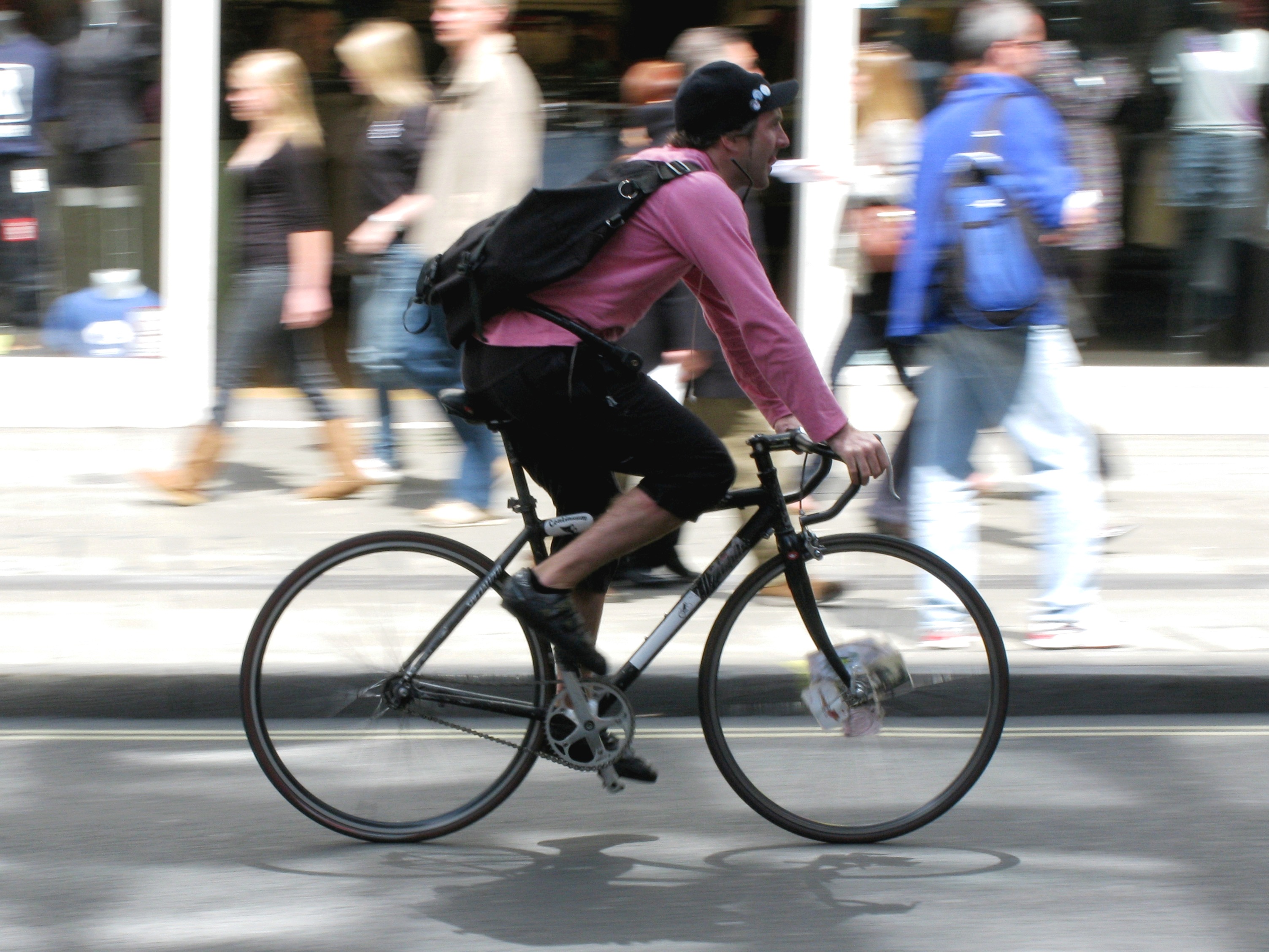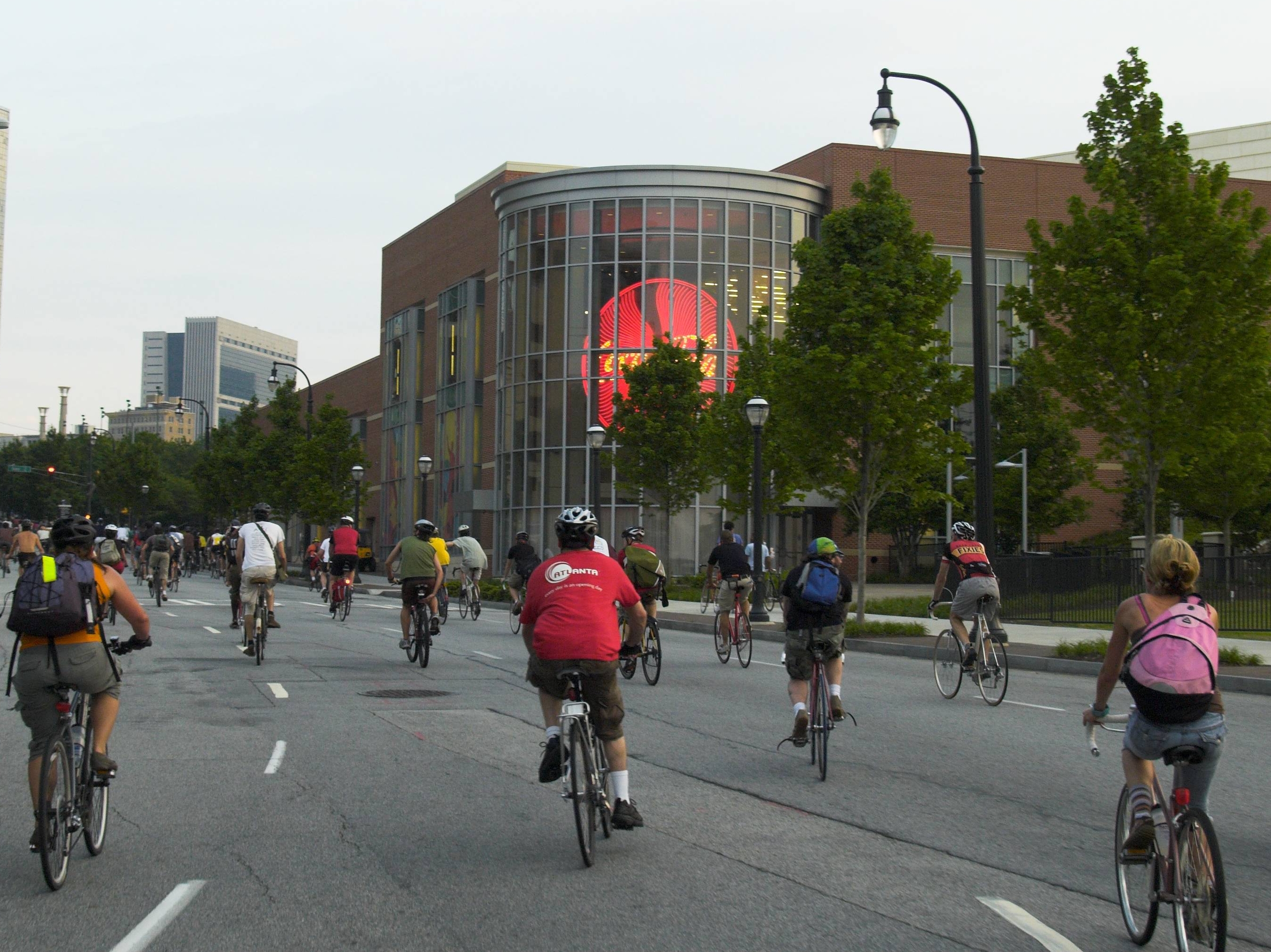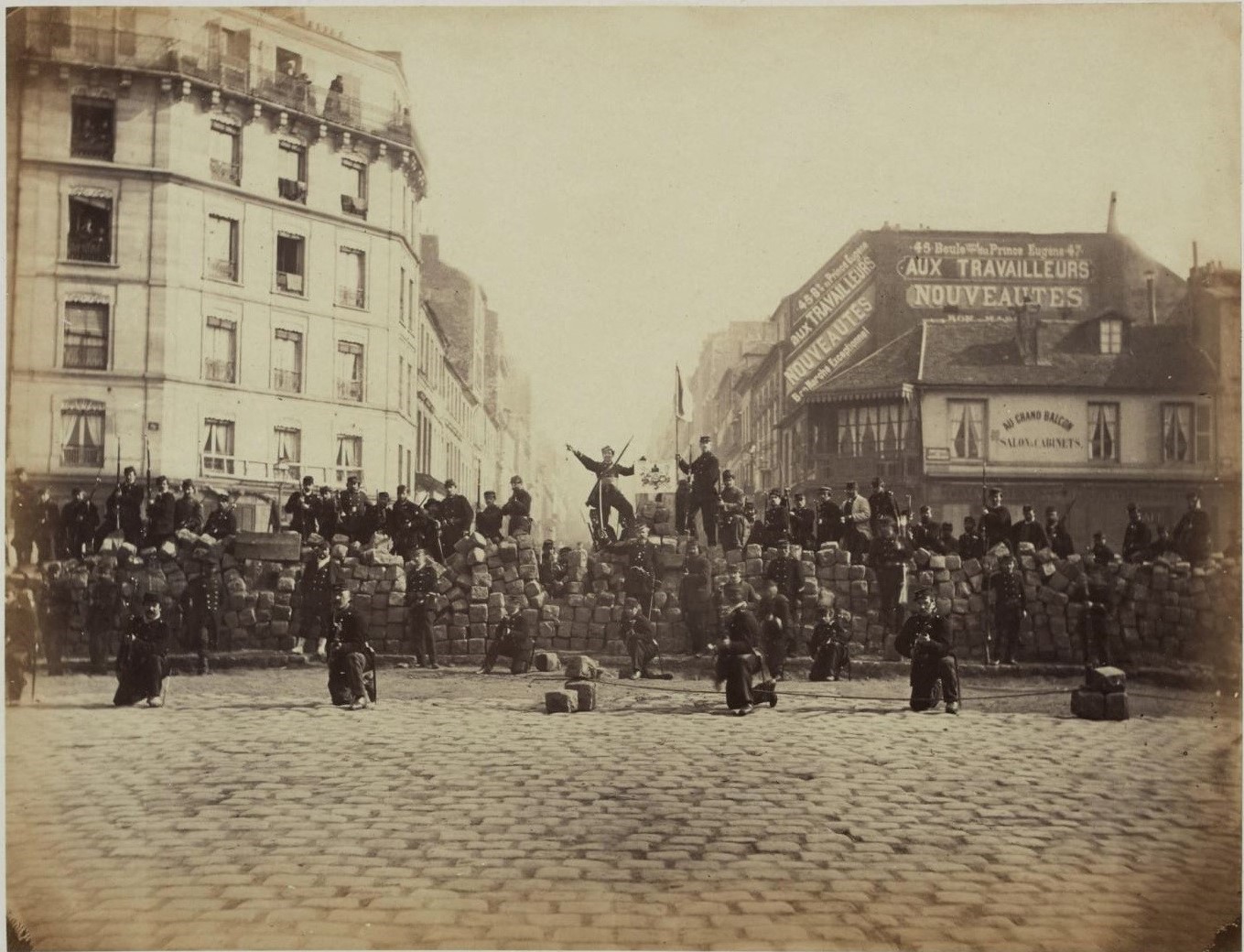|
Midnight Ridazz
Midnight Ridazz is a late-night group bicycle ride that celebrates bicycle culture in Los Angeles. The ride takes place on city streets, has no sponsors, is not sanctioned by any government agency, and does not require registration or membership in a club. The ride follows different routes each month and are generally between long. Traditionally, the ride has taken place on the second Friday of every month at about 10:00 PM from a starting point in Echo Park; however, the surge of popularity it has enjoyed in recent years has made it possible for rides to occur much more frequently and in diverse parts of the city. If the ride passes through downtown Los Angeles it is traditional for the route to include the 2nd Street Tunnel. History Midnight Ridazz began in February, 2004 when six cyclists and two skateboarders in Echo Park took an impromptu tour of the fountains in downtown Los Angeles. The idea of taking a monthly late night group bicycle ride to see interesting and unusual ... [...More Info...] [...Related Items...] OR: [Wikipedia] [Google] [Baidu] |
Bicycle Culture
Bicycle culture can refer to a mainstream culture that supports the use of bicycles or to a subculture. Although "bike culture" is often used to refer to various forms of associated fashion, it is erroneous to call fashion in and of itself a culture. Cycling culture refers to cities and countries which support a large percentage of utility cycling. Examples include the Netherlands, Denmark, Germany, Belgium (Flanders in particular), Sweden, Italy, China, Bangladesh and Japan. There are also towns in some countries where bicycle culture has been an integral part of the landscape for generations, even without much official support. That is the case of Ílhavo, in Portugal. North American cities with strong bicycle cultures include Madison, Portland, San Francisco, Boston, Toronto, Montreal, Lincoln, Peoria, and the Twin Cities. A city with a strong bicycle culture usually has a well-developed cycling infrastructure, including segregated bike lanes and extensive facilities caterin ... [...More Info...] [...Related Items...] OR: [Wikipedia] [Google] [Baidu] |
Entertainment
Entertainment is a form of activity that holds the attention and interest of an audience or gives pleasure and delight. It can be an idea or a task, but is more likely to be one of the activities or events that have developed over thousands of years specifically for the purpose of keeping an audience's attention. Although people's attention is held by different things because individuals have different preferences, most forms of entertainment are recognisable and familiar. Storytelling, music, drama, dance, and different kinds of performance exist in all cultures and were supported in royal courts and developed into sophisticated forms, over time becoming available to all citizens. The process has been accelerated in modern times by an entertainment industry that records and sells entertainment products. Entertainment evolves and can be adapted to suit any scale, ranging from an individual who chooses a private entertainment from a now enormous array of pre-recorded p ... [...More Info...] [...Related Items...] OR: [Wikipedia] [Google] [Baidu] |
DIY Culture
"Do it yourself" ("DIY") is the method of building, modifying, or repairing things by oneself without the direct aid of professionals or certified experts. Academic research has described DIY as behaviors where "individuals use raw and semi-raw materials and parts to produce, transform, or reconstruct material possessions, including those drawn from the natural environment (e.g., landscaping)". DIY behavior can be triggered by various motivations previously categorized as marketplace motivations (economic benefits, lack of product availability, lack of product quality, need for customization), and identity enhancement (craftsmanship, empowerment, community seeking, uniqueness). The term "do-it-yourself" has been associated with consumers since at least 1912 primarily in the domain of home improvement and maintenance activities. The phrase "do it yourself" had come into common usage (in standard English) by the 1950s, in reference to the emergence of a trend of people underta ... [...More Info...] [...Related Items...] OR: [Wikipedia] [Google] [Baidu] |
Culture Of Los Angeles
The culture of Los Angeles is rich with arts and ethnically diverse. The greater Los Angeles metro area has several notable art museums including the Los Angeles County Museum of Art (LACMA), the J. Paul Getty Museum on the Santa Monica Mountains overlooking the Pacific, the Museum of Contemporary Art (MOCA), and the Hammer Museum. In the 1920s and 1930s Will Durant and Ariel Durant, Arnold Schoenberg and other intellectuals were the representatives of culture, in addition to the movie writers and directors. As the city flourished financially in the middle of the 20th century, culture followed. Boosters such as Dorothy Buffum Chandler and other philanthropists raised funds for the establishment of art museums, music centers and theaters. Today, the Southland cultural scene is as complex, sophisticated and varied as any in the world. History The history of Los Angeles began in 1781 when 44 settlers from New Spain established a permanent settlement in what is now Downtown Los A ... [...More Info...] [...Related Items...] OR: [Wikipedia] [Google] [Baidu] |
Cycling In Los Angeles
Cycling in Los Angeles accounts for less than one percent (0.6%) of all work commutes. Because of the mild climate, there is little need to carry the variety of clothing that cyclists require in other less temperate climates. History One of the world's earliest examples of a Segregated cycle facilities, segregated cycle facility was the nine-mile dedicated California Cycleway, Cycle-Way built in 1897 to connect Pasadena, California, Pasadena to Los Angeles. Its right-of-way followed the stream bed of the Arroyo Seco (Los Angeles County), Arroyo Seco and required 1,250,000 board feet (2,950 m3) of pine to construct. The roundtrip toll was 15United States cent, ¢ and it was lit with electric lights along its entire length. The route did not succeed, and the right-of-way later became the route for the Pasadena Freeway, Arroyo Seco Parkway, an automobile freeway opened in 1940. Los Angeles' cycling network there were more than of bike lanes and Bicycle path, paths in the ... [...More Info...] [...Related Items...] OR: [Wikipedia] [Google] [Baidu] |
Utility Cycling
Utility cycling encompasses any cycling done simply as a means of transport rather than as a sport or leisure activity. It is the original and most common type of cycling in the world. Cycling mobility is one of the various types of private transport and a major part of individual mobility. Overview Utility or "transportational" cycling generally involves traveling short and medium distances (several kilometres, not uncommonly 3–15 kilometres one way, or somewhat longer), often in an urban environment. It includes commuting (i.e. going to work, school or university), going shopping and running errands, as well as heading out to see friends and family or for other social activities. It also includes economic activity such as the delivering of goods or services. In cities, the bicycle courier is often a familiar feature, and cargo bikes are capable of competing with trucks and vans particularly where many small deliveries are required, especially in congested areas. Velo ... [...More Info...] [...Related Items...] OR: [Wikipedia] [Google] [Baidu] |
Bicycle Commuting
Bicycle commuting is the use of a bicycle to travel from home to a place of work or study — in contrast to the use of a bicycle for sport, recreation or touring. Commuting especially lends itself to areas with relatively flat terrain and arrangements to keep riders relatively safe from the hazards of accidents with motorized traffic, e.g. separated bicycle lanes and a general acceptance of cyclists as traffic participants. The rise of the electric bicycle which is quickly surpassing the sales of conventional bicycles will effectively increase bicycle commuting in hilly areas and allow for longer journeys. A bike bus is a form of collective bicycle commuting where participants cycle together on a set route following a set timetable. Cyclists may join or leave the bike bus at various points along the route. Bicycles are used for commuting worldwide. In some places, like the Netherlands, cycling to work is very common. Elsewhere, commuting by car or public transport is the n ... [...More Info...] [...Related Items...] OR: [Wikipedia] [Google] [Baidu] |
Bicycle Messenger
Bicycle messengers (also known as bike or cycle couriers) are people who work for courier companies (also known as messenger companies) carrying and delivering items by bicycle. Bicycle messengers are most often found in the central business districts of metropolitan areas. Courier companies use bike messengers because bicycle travel is less subject to unexpected holdups in city traffic jams, and is not deterred by parking limitations, fees or fines in high-density development that can hinder or prevent delivery by motor vehicle, thereby offering a predictable delivery time. History Almost immediately after the development of the pedal-driven velocipede in the 1860s, people began to use the bicycle for delivery purposes. David V. Herlihy's 2004 book on the early history of the bicycle contains several references to bicycle messengers working during the late 19th century, including a description of couriers employed by the Paris stock exchange in the 1870s. During the bicycle ... [...More Info...] [...Related Items...] OR: [Wikipedia] [Google] [Baidu] |
Critical Mass (cycling)
Critical Mass is a form of direct action in which people meet at a set location and time and travel as a group through their neighbourhoods on bikes. The idea is for people to group together to make it safe for each other to ride bicycles through their streets, based on the old adage: ''there's safety in numbers''. Critical Mass events highlight the numbers of people who want to use their bike on the streets, but are usually unable to do so without risking their safety. They are a call to action to councils, governments and road planners to properly and thoughtfully design in the safety of all road users, including those who would prefer to walk and cycle, instead of prioritising motor traffic above all else. The event originated in 1992 in San Francisco (typically held on the last Friday of every month); by the end of 2003, the event was being held in over 300 cities around the world. Critical Mass has been described as "monthly political-protest rides", and characterized as be ... [...More Info...] [...Related Items...] OR: [Wikipedia] [Google] [Baidu] |
Activism
Activism (or Advocacy) consists of efforts to promote, impede, direct or intervene in Social change, social, Political campaign, political, economic or Natural environment, environmental reform with the desire to make Social change, changes in society toward a perceived greater good. Forms of activism range from Mandate (politics), mandate building in a community (including writing letters to newspapers), petitioning elected officials, running or contributing to a political campaign, preferential patronage (or boycott) of businesses, and demonstrative forms of activism like Demonstration (protest), rallies, Demonstration (people), street marches, strikes, sit-ins, or hunger strikes. Activism may be performed on a day-to-day basis in a wide variety of ways, including through the creation of art (artivism), computer hacking (hacktivism), or simply in how one chooses to spend their money (economic activism). For example, the refusal to buy clothes or other merchandise from a comp ... [...More Info...] [...Related Items...] OR: [Wikipedia] [Google] [Baidu] |
Commerce
Commerce is the large-scale organized system of activities, functions, procedures and institutions directly and indirectly related to the exchange (buying and selling) of goods and services among two or more parties within local, regional, national or international economies. More specifically, commerce is not business, but rather the part of business which facilitates the movement and distribution of finished or unfinished but valuable goods and services from the producers to the end consumers on a large scale, as opposed to the sourcing of raw materials and manufacturing of those goods. Commerce is subtly different from trade as well, which is the final transaction, exchange or transfer of finished goods and services between a seller and an end consumer. Commerce not only includes trade as defined above, but also a series of transactions that happen between the producer and the seller with the help of the auxiliary services and means which facilitate such trade. These auxiliary ... [...More Info...] [...Related Items...] OR: [Wikipedia] [Google] [Baidu] |
Automobile
A car or automobile is a motor vehicle with Wheel, wheels. Most definitions of ''cars'' say that they run primarily on roads, Car seat, seat one to eight people, have four wheels, and mainly transport private transport#Personal transport, people instead of cargo, goods. The year 1886 is regarded as the birth year of the car, when German inventor Carl Benz patented his Benz Patent-Motorwagen. Cars became widely available during the 20th century. One of the first cars affordable by the masses was the 1908 Ford Model T, Model T, an American car manufactured by the Ford Motor Company. Cars were rapidly adopted in the US, where they replaced Draft animal, animal-drawn carriages and carts. In Europe and other parts of the world, demand for automobiles did not increase until after World War II. The car is considered an essential part of the Developed country, developed economy. Cars have controls for driving, parking, passenger comfort, and a variety of lights. Over the decades, a ... [...More Info...] [...Related Items...] OR: [Wikipedia] [Google] [Baidu] |









